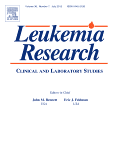
LEUKEMIA RESEARCH
Scope & Guideline
Advancing knowledge in leukemia and hematological disorders.
Introduction
Aims and Scopes
- Clinical Research on Hematological Malignancies:
Investigates clinical outcomes, treatment efficacy, and safety in patients with various types of leukemia and related disorders, providing insights into real-world practices. - Molecular and Genetic Characterization:
Focuses on the identification and analysis of genetic mutations, chromosomal abnormalities, and molecular pathways involved in the pathogenesis of leukemias and myelodysplastic syndromes. - Innovative Therapeutic Strategies:
Explores novel treatment approaches including targeted therapies, immunotherapies, and combination regimens to improve patient outcomes in hematological malignancies. - Epidemiological and Population-Based Studies:
Analyzes demographic factors, treatment patterns, and survival outcomes across different populations to understand disparities in leukemia treatment and prognosis. - Translational Research:
Bridges laboratory findings with clinical applications, focusing on how basic research can lead to advancements in treatment strategies and patient management.
Trending and Emerging
- Genomic and Transcriptomic Profiling:
An increasing emphasis on using genomic and transcriptomic data to understand the molecular underpinnings of leukemias, enabling personalized medicine approaches. - Immunotherapy and CAR-T Cell Therapies:
A significant rise in studies examining the efficacy and safety of immunotherapeutic strategies, including CAR-T cell therapies, indicating a shift towards more targeted treatments. - Artificial Intelligence and Machine Learning:
Emerging applications of AI and machine learning in predicting treatment responses and outcomes in leukemia patients, showcasing a trend towards data-driven approaches. - Clonal Hematopoiesis and Its Implications:
Growing interest in the implications of clonal hematopoiesis in the development of hematological malignancies, indicating a shift towards understanding pre-leukemic states. - Patient-Centric Research and Quality of Life Studies:
An increasing focus on patient-reported outcomes and quality of life in the context of treatment for leukemia, highlighting the importance of patient perspectives in research.
Declining or Waning
- Traditional Chemotherapy Protocols:
Research focusing solely on conventional chemotherapy regimens is less prevalent as newer targeted therapies and immunotherapies gain prominence. - Generalized Risk Factors:
While risk factors for leukemias were once a major focus, recent studies have shifted towards more specific genetic and molecular insights, leading to a decline in broad epidemiological studies. - Single-Agent Treatments:
There is a noticeable decrease in studies evaluating single-agent therapies, as combination therapies and novel agents become the focus of research. - Histopathological Studies:
Research centered on traditional histopathological evaluations is being overshadowed by molecular profiling and advanced imaging techniques. - Basic Science without Clinical Relevance:
Basic research that does not have clear clinical implications or pathways to treatment is becoming less common, as journals favor studies that link laboratory findings to patient outcomes.
Similar Journals

Journal of Hematology & Oncology
Transforming Insights into Impactful TreatmentsJournal of Hematology & Oncology, published by BMC, is a leading open-access journal dedicated to the dynamic fields of hematology and oncology, with a continuous publication record since 2008. Based in the United Kingdom, this prestigious journal provides a platform for groundbreaking research, encompassing topics that span cancer research, hematological disorders, and molecular biology. With a remarkable Q1 ranking in multiple categories including Cancer Research, Hematology, Molecular Biology, and Oncology for 2023, it stands as a significant contributor to the scientific community. The journal's rigorous peer-review process ensures the dissemination of high-quality studies that drive advancements in these critical areas of medicine, boasting an impressive Scopus rank in the top echelons of its fields. As an open-access publication, it promotes widespread accessibility and sharing of knowledge, making it an indispensable resource for researchers, clinicians, and students striving to make advancements in understanding and treating hematological and oncological diseases.

Experimental Hematology & Oncology
Pioneering Insights in Hematology and OncologyExperimental Hematology & Oncology is a premier journal published by BMC, dedicated to advancing knowledge in the fields of hematology, oncology, and cancer research. Since its inception in 2012, this Open Access journal has emerged as a vital resource for researchers and healthcare professionals, fostering the dissemination of high-quality research that enhances our understanding of blood disorders and malignancies. With impressive rankings in Quarters 1 of key categories including Cancer Research, Hematology, and Oncology, it holds significant prestige, evidenced by its Scopus rankings: #42/404 in Medicine (Oncology) and #17/137 in Medicine (Hematology). The journal aims to publish cutting-edge studies, reviews, and perspectives that contribute to the evolution of therapeutic strategies and innovative treatment modalities. Researchers and practitioners alike will find this journal indispensable for staying at the forefront of breakthroughs in hematological and oncological research.

ACTA HAEMATOLOGICA
Driving Excellence in Blood Science ResearchACTA HAEMATOLOGICA, published by KARGER, is a prestigious journal established in 1948, dedicated to the field of hematology and related medical sciences. With an ISSN of 0001-5792 and an E-ISSN of 1421-9662, this journal stands out with a Q2 ranking in both Hematology and Miscellaneous Medicine categories as of 2023. Researchers and professionals can benefit from its high-quality peer-reviewed articles, contributing to a more profound understanding and advancement of hematological practices. Although it does not offer open access options, ACTA HAEMATOLOGICA remains an essential resource for researchers in Switzerland and worldwide, providing critical insights and fostering discourse among academic and clinical communities. The journal's address is located in the heart of Basel, Switzerland, ensuring its robust connection to European medical research networks. With a firm commitment to excellence, this publication plays a vital role in disseminating knowledge, guiding future innovations in the field.
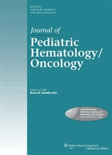
JOURNAL OF PEDIATRIC HEMATOLOGY ONCOLOGY
Advancing pediatric care through groundbreaking research.JOURNAL OF PEDIATRIC HEMATOLOGY ONCOLOGY, published by Lippincott Williams & Wilkins, serves as a vital platform for the dissemination of cutting-edge research and insights in the fields of pediatric hematology and oncology. Since its inception in 1979, the journal has maintained a commitment to advancing knowledge through peer-reviewed articles that contribute to the understanding and treatment of blood disorders and cancers in children. With an impact factor reflective of its academic contributions, the journal is positioned in the Q3 quartile across key medical categories — Hematology, Oncology, and Pediatrics, Perinatology and Child Health — indicating its relevance and influence in the field. While it does not currently offer open access options, the journal remains a crucial resource for researchers, clinicians, and students dedicated to improving pediatric care and outcomes. Researchers are encouraged to contribute to this esteemed journal as it seeks to bridge the gap between clinical practice and research, fostering innovation and improved quality of life for young patients affected by hematologic and oncologic conditions.
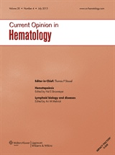
CURRENT OPINION IN HEMATOLOGY
Exploring the forefront of hematology research and insights.CURRENT OPINION IN HEMATOLOGY is a leading peer-reviewed journal published by Lippincott Williams & Wilkins, focusing on the latest advancements and insights in the field of hematology. With an impressive impact factor and ranked in the first quartile (Q1) of its category, this journal serves as a vital resource for researchers, clinicians, and students seeking to stay informed on contemporary issues and emerging trends in hematological research and treatment. Established in 1994, it showcases critical reviews, expert commentary, and systematic analyses across a broad spectrum of hematology topics, contributing significantly to clinical and experimental knowledge through its robust editorial standards. While offering traditional subscription access, CURRENT OPINION IN HEMATOLOGY remains committed to providing a platform that bridges the gap between fundamental research and clinical application, making it indispensable for professionals dedicated to advancing patient care and scientific understanding in hematology.

UHOD-Uluslararasi Hematoloji-Onkoloji Dergisi
Elevating insights for a healthier tomorrow.UHOD-Uluslararasi Hematoloji-Onkoloji Dergisi, published by AKAD DOKTORLAR YAYINEVI, is a pivotal journal in the fields of hematology and oncology, catering to an international audience of researchers, clinicians, and students. Since its inception in 2005, the journal has committed to disseminating high-quality, peer-reviewed research, highlighting advancements and challenges in the diagnosis and treatment of hematological and oncological disorders. Registered under ISSN 1306-133X, it serves as a significant platform for scholarly discourse, despite its recent categorization in the Q4 quartile for both hematology and oncology—indicating opportunities for growth and contribution within the scientific community. While currently not Open Access, the journal's indexed contribution to Scopus ranks it within the 12th and 17th percentiles in the domains of hematology and oncology respectively, reflecting its emerging presence within the academic landscape. As it approaches its convergence point in 2024, UHOD strives to elevate its influence, providing invaluable insights and fostering collaborations in the ongoing fight against blood disorders and cancer.
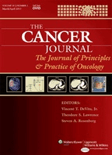
CANCER JOURNAL
Innovating Oncology: Where Research Meets Impact.CANCER JOURNAL is a leading peer-reviewed publication dedicated to the dissemination of innovative research in the fields of cancer research and oncology. Published by Lippincott Williams & Wilkins, this journal serves as an essential resource for researchers, clinicians, and students seeking to advance their understanding of cancer mechanisms, treatment strategies, and patient care. With an ISSN of 1528-9117 and an E-ISSN of 1540-336X, it boasts a respectable 2023 Q2 category ranking in both Cancer Research and Oncology, reflecting its impactful contributions to the scientific community. Although it currently does not offer open access, the journal's rigorous peer-review process ensures the publication of high-quality, relevant studies that stimulate further investigation and collaboration among professionals. Since its inception, the journal has evolved through several converged years, maintaining a steadfast commitment to addressing the complexities of cancer biology and treatment. At its core, CANCER JOURNAL aims to foster advancements in oncology, making it a vital platform for sharing pivotal findings that could transform cancer research and therapeutic practices.
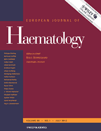
EUROPEAN JOURNAL OF HAEMATOLOGY
Connecting Experts in the Evolving Field of HematologyEUROPEAN JOURNAL OF HAEMATOLOGY, published by Wiley, serves as a vital resource for experts in the field of hematology, focusing on the latest advancements in blood disorders and therapies. With an ISSN of 0902-4441 and an E-ISSN of 1600-0609, this esteemed journal has been disseminating knowledge since 1986 and continues to thrive, converging its visionary approach through to 2024. Notably, it holds a distinguished Q2 ranking in Hematology and an impressive Q1 ranking in the broader category of Medicine (miscellaneous) as of 2023, highlighting its significant contribution to the scientific community. With a Scopus rank of #45/137 and a 67th percentile in the field, the journal is recognized for its rigorous peer-reviewed research, making it an indispensable publication for researchers, practitioners, and students aiming to stay at the forefront of hematological studies. Though not an open-access journal, it ensures broad accessibility to critical findings via its subscription model, thus fostering an informed and globally engaged audience.

Journal of Blood Medicine
Exploring Frontiers: Where Blood Medicine Meets Cutting-edge ScienceThe Journal of Blood Medicine, published by DOVE MEDICAL PRESS LTD, stands as a vital resource in the field of hematology, focusing on the latest research developments and clinical advancements in blood medicine. With an impact factor reflective of its growing relevance, this open-access journal has been delivering quality scholarly work since 2010, ensuring that critical research is readily available to the global scientific community. The journal operates under an open-access model, further enhancing its dissemination and accessibility to researchers, professionals, and students alike. In the 2023 rankings, it secured a Q3 category status within hematology and achieved a commendable 76th rank out of 137 in Scopus listings, indicating its commitment to quality and innovation in this specialized area. Located in New Zealand, the journal's diverse topics encompass clinical research, treatment modalities, and emerging therapies, contributing significant insights vital for shaping future advancements in blood medicine.
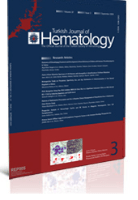
Turkish Journal of Hematology
Fostering collaboration in hematology research and clinical practice.Turkish Journal of Hematology is an esteemed publication dedicated to advancing the field of hematology, producing influential research since its inception in 1999 under the auspices of GALENOS PUBL HOUSE. With an Open Access model, it facilitates widespread dissemination of knowledge, allowing researchers, clinicians, and students to stay abreast of the latest developments in blood disorders and treatments. With an ISSN of 1300-7777 and an E-ISSN of 1308-5263, the journal holds a commendable position in the academic community, evidenced by its 2023 Q3 ranking within the hematology category and its standing at #80 out of 137 in the Scopus database, placing it in the 41st percentile. Covering a wide scope of topics within hematology, this journal serves as a critical resource for disseminating innovative research and clinical practices pertinent to the ongoing challenges faced in this vital area of medicine. With its continuous publication until 2024, Turkish Journal of Hematology remains a beacon for enhancing the understanding and treatment of hematological conditions within the Turkish and global medical communities.